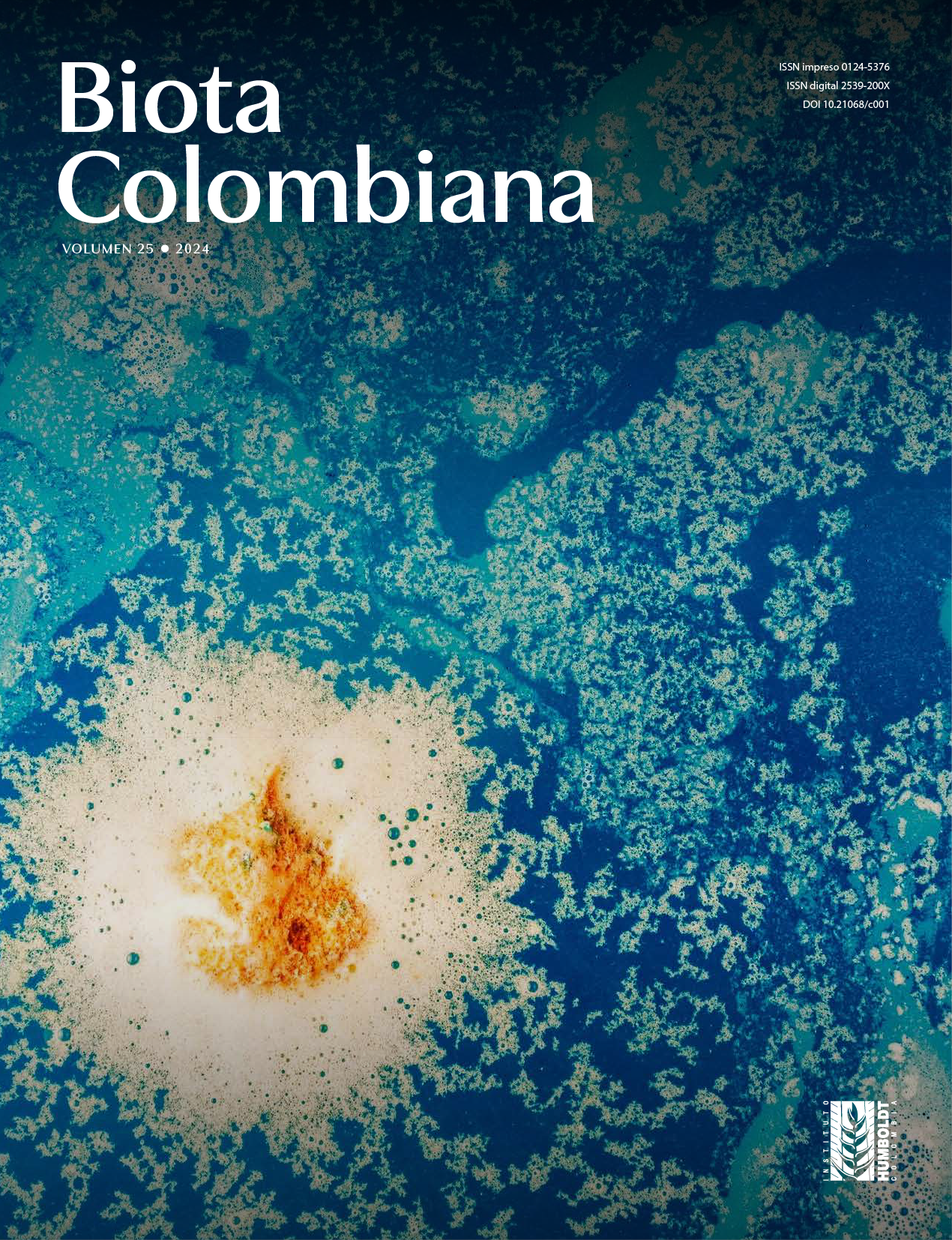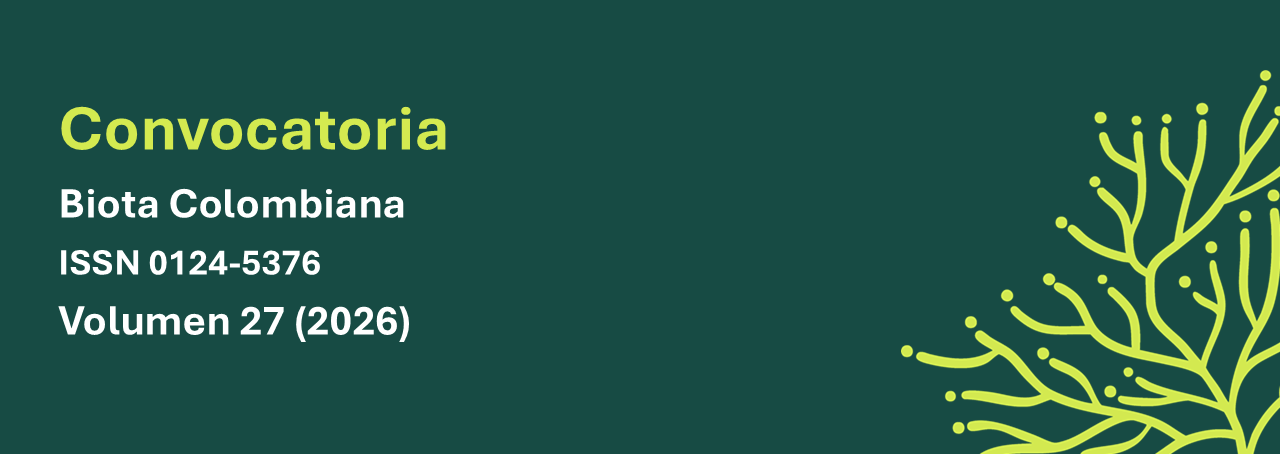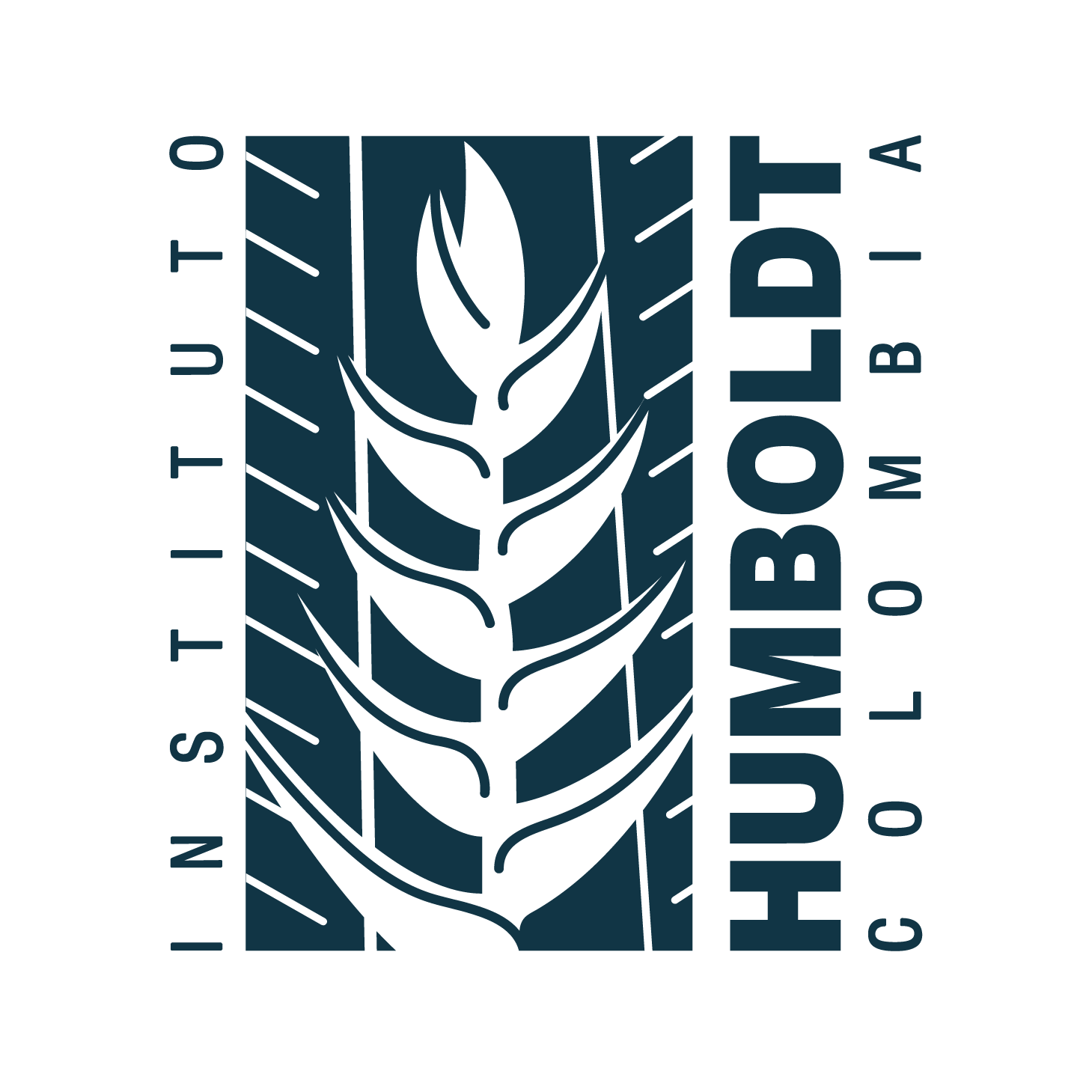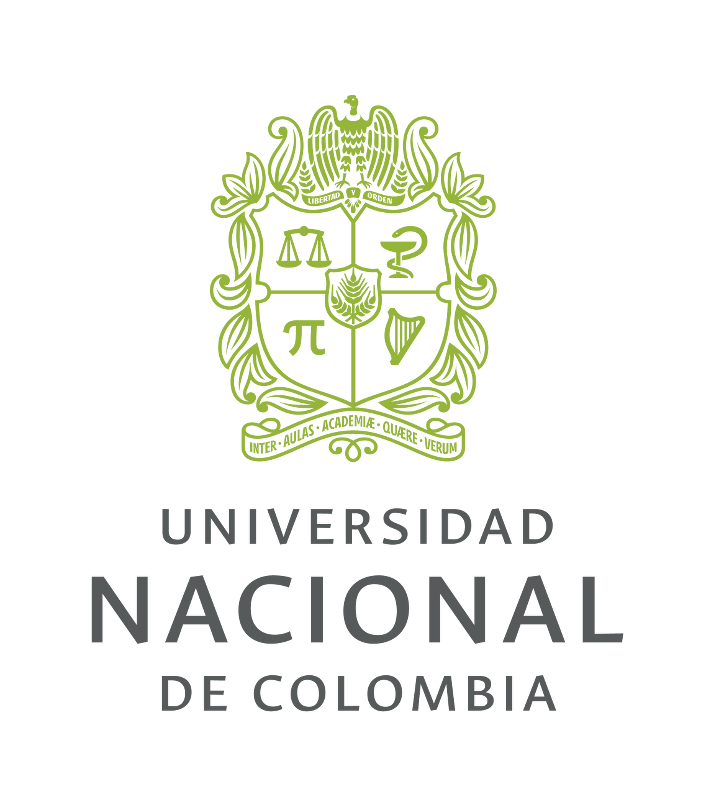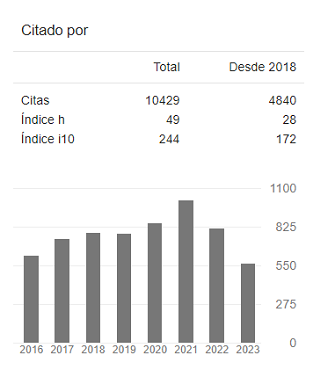Recibido: 11 de mayo de 2023; Aceptado: 18 de enero de 2024; : 15 de abril de 2024
Resumen
Las palmas del género Phoenix han sido introducidas con fines estéticos en diferentes ciudades del mundo y se ha reportado que tienen comunidades de plantas epifitas creciendo sobre ellas. Esta investigación evaluó la flora epifita encontrada en la necromasa y en las copas de palmas de este género en Bogotá, Colombia, y los rasgos que hacen que se establezca allí. Para esto se muestrearon 66 individuos en las localidades de Kennedy y Bosa, se calculó el Índice de Valor de Importancia (IVI), el índice de Shannon-Wiener (H), el índice de diversidad funcional (FRic), la equidad funcional (FEve) y divergencia funcional (FDiv) y la similaridad con las epifitas encontradas en palmas del mismo género en cuatro ciudades del mundo a través del índice de Jaccard. Los resultados obtenidos muestran una alta riqueza y diversidad florística, con la presencia de 42 especies, 36 géneros y 19 familias. Asteraceae, Poaceae, Polygonaceae y Amaranthaceae fueron las familias más importantes. En cuanto a los rasgos funcionales, la mayoría de las especies contaba con rasgos de historia de vida adecuados para la colonización de áreas novedosas o intervenidas, encontrando que solo el 7 % de las especies son epifitas verdaderas.
Palabras clave:
diversidad florística, diversidad funcional, flora espontánea, epifitismo, forófito.Abstract
Palms of the Phoenix genus have been introduced for aesthetic purposes in different cities around the world and have been reported to have communities of epiphytic plants growing on them. This research evaluated the epiphytic flora found in the necromass and the crowns of palms of the Phoenix genus in Bogotá, Colombia, and the traits that make them establish there. For this purpose, 66 individuals were sampled in the localities of Kennedy and Bosa, and the Importance Value Index (IVI), the Shannon-Wiener index (H), the functional diversity index (FRic), the functional equity (FEve) and functional divergence (FDiv) and the similarity with the epiphytes found in palms of the same genus in four cities around the world through the Jaccard index were calculated. The results obtained show a high floristic richness and diversity, with the presence of 42 species, 36 genera and 19 families. Asteraceae, Poaceae, Polygonaceae and Amaranthaceae were the most important families. Regarding functional traits, most species had life history traits suitable for the colonization of novel or intervened areas, finding that only 7% of the species are true epiphytes.
Keywords:
floristic diversity, functional diversity, spontaneous flora, epiphytism, phorophyte..Introducción
El papel que cumple la vegetación de las ciudades ha cobrado especial relevancia en los últimos años, debido a la regulación y sostenimiento ambiental que esta representa (Zhang et al., 2022; Costanza et al., 1997). Además, ofrece múltiples servicios al ser humano y mitiga condiciones medioambientales adversas como la contaminación, la fragmentación y la pérdida o degradación de hábitat, entre otras (Bolund & Hunhammar, 1999; Williams et al., 2009; Gómez & Barton, 2013; Lovell & Taylor, 2013; Guillén & Orellana, 2016).
En las ciudades se destaca la presencia de un grupo de especies no introducidas voluntariamente por el ser humano, con una alta capacidad de colonización, conocida como flora espontánea (Cervelli et al., 2013; Kendle & Forbes, 1997) -o las mal llamadas malezas (Drenovsky et al., 2012)-, cuyo establecimiento no obedece a ningún tipo de manejo estético. Estas comunidades vegetales han adquirido mayor importancia, ya que pueden prestar diversos servicios ecosistémicos (Speak et al., 2015; Robinson & Lundholm, 2012) y establecerse en grandes áreas abandonadas sin ningún tipo de manejo o en áreas pequeñas con condiciones ecológicas adversas (como muros, pavimento o grietas), con interacciones que antes solo se observaban en los ecosistemas naturales. Tal es el caso del epifitismo (Blouin et al., 2018; Yalcinalp & Meral 2017; Francis, 2010; Lundholm & Marlin, 2006; Millard, 2004), definido por Smith y Smith (2021) como una interacción de comensalismo entre un forófito (u hospedero) y una planta epífita. En una definición clásica, las plantas epífitas (del griego epi, que significa “sobre”, y phyte, “planta”) son aquellas que crecen sobre otras plantas adhiriéndose a estructuras del forófito y usándolo como soporte, sin generar ningún daño (Granados et al., 2004).
Perteneciente a la familia Arecaceae, el género Phoenix L. (Sp. Pl. 2: 1188) todavía no cuenta con su taxonomía y filogenia resueltas, debido al gran parecido morfológico de todas las especies y a su capacidad de hibridar entre sí. A pesar de esto, actualmente se aceptan 14 especies de Phoenix (Gros et al., 2020). En Bogotá, el Sistema de Información Geográfica del Arbolado Urbano (SIGAU) registra seis especies cultivadas en la ciudad, cinco de ellas determinadas a especie (P. canariensis, P. dactylifera, P. roebelinii, P serrulata, P. reclinata) y una solo determinada a género. Estas especies se encuentran representadas por 4237 individuos y distribuidas en todas las localidades, excepto en la de Sumapaz.
P. canariensis fue introducida como especie ornamental en los jardines de Europa durante el siglo XIX (Zona, 2008). En Bogotá, se tienen registros de palmas sembradas hacia 1945, siendo esta la especie con el mayor número de individuos. Algunos incluso han sido declarados como árboles patrimoniales de la ciudad (Cortés, 2013).
En otras ciudades del mundo se ha observado que estas palmas presentan interacciones de epifitismo con especies de hierbas espontáneas y/o plántulas de árboles cercanos (Cerón & Reyes, 2021; Jiménez et al., 2019; Pomares, 2015), un fenómeno que no se ha estudiado para Bogotá. Por ese motivo, esta investigación explora la diversidad florística de las epífitas vasculares asociadas a las palmas del género Phoenix en Bogotá y evalúa los rasgos funcionales que favorecen su establecimiento.
Materiales y métodos
Bogotá es la capital de Colombia. Se encuentra ubicada en la zona central del país, sobre la cordillera de los Andes, en la vertiente occidental de la cordillera Oriental, a una altura de 2600 m s. n. m. Según datos del Instituto de Hidrología, Meteorología y Estudios Ambientales (IDEAM, 2004), tiene un clima frío y muy seco, con precipitaciones de 797 mm (promedio anual) y una temperatura que oscila entre 18 y 20 °C.
Tras consultar en el SIGAU, se seleccionó el sitio con el mayor número de palmas y la menor distancia entre ellas: una alameda de uso recreativo y comercial en las localidades de Bosa y Kennedy, al suroccidente de la ciudad (74°12’0”W-4°37’40”N; 74°9’0”W-4°37’40”N). La alameda atraviesa seis canales hídricos pertenecientes a la cuenca del río Tunjuelo (Figura 1) y desemboca en el canal Cundinamarca y posteriormente en el río Bogotá (Alcaldía Local de Kennedy, 2019). Las palmas se encuentran plantadas en la mitad del canal en pozos de siembra, lo cual indica un uso ornamental en el diseño paisajístico.
Entre abril y octubre de 2021, se realizó una evaluación de la flora epífita asociada a 66 palmas del género Phoenix (76 % de la especie P. roebelenii y 24 % de P. canariensis). Las plantas se encontraban en los entrenudos de las copas y creciendo en la necromasa depositada sobre el estípite de la palma, la cual corresponde a pecíolos cortados o partidos. Se tomaron muestras fotográficas de las especies conocidas y muestras botánicas de las especies desconocidas para ser determinadas al menor nivel taxonómico posible por medio del uso de claves taxonómicas y monografías, de acuerdo con el sistema de clasificación APG IV (Angiosperm Phylogeny Group, 2016). Los ejemplares fueron depositados en el Herbario del Jardín Botánico de Bogotá (JBB). Así mismo, se le tomaron datos dasométricos a cada individuo: altura máxima, cobertura (porcentaje de ocupación del sobre el estípite o copa) y número de flores. Con estos datos se obtuvo la información de composición y estructura florística a partir del cálculo de la riqueza especifica (S) y el índice de valor de importancia (IVI) con las fórmulas propuestas por Valdez et al. (2018).
Se calculan las variables relativas de Ai = densidad (abundancia), Di = cobertura y Fi = frecuencia.
De este modo,
Ai = densidad absoluta, Ni = número de individuos de la especie i y E = superficie de muestreo.
Di = la cobertura absoluta, Ab = área de la especie i y E = la superficie.
Fi = frecuencia absoluta, Pi = número de sitios en el que está presente la especie i y NS = número total de sitios de muestreo.
Así mismo, se halló el índice de diversidad de Shannon-Wiener (H’). Para conocer la similitud florística con otras comunidades de epífitas que crecen en palmas del mismo género en otras ciudades, se hizo un clúster con el índice de Jaccard (Cerón & Reyes, 2021; Pomares, 2015; Brandes, 2007).
Figura 1: Ubicación de los individuos del género Phoenix seleccionados en Bogotá, Colombia.
Adicionalmente, se realizó la búsqueda de rasgos cualitativos relacionados con aspectos fenológicos asociados a las estrategias que adoptan las plantas bajo condiciones urbanas, tales como el incremento en la temperatura o la dispersión a través de largas distancias para la colonización de espacios alterados (Monalisa & Nunes, 2019; Williams et al., 2015). Entre ellos, se encuentran: síndrome de dispersión (autocoria, anemocoria, barocoria, balisticoria, hidrocoria, epizoocoria, endozoocoria), historia de vida (anual, bienal, perenne), forma de crecimiento (hierba, liana, helecho, arbusto, árbol), forma de vida (terófita, geófita, hemicriptófita, caméfita, epífita, fanerófita) y origen biogeográfico (exótica, nativa). También se calcularon tres índices de diversidad funcional -riqueza funcional (FRic), equidad funcional (FEve) y divergencia funcional (FDiv)- para comparar los rasgos de la vegetación asociada a los dos microhábitats (copa de las palmas y necromasa del estípite) mediante el paquete FD (Laliberté et al., 2022). Posteriormente, se construyó un análisis de componentes principales (PCA, por sus siglas en inglés) para comparar la distribución de las especies y sus rasgos en los microhábitats estudiados, mediante el paquete ggbiplot (Vu, 2011). Todos los análisis donde se utilizaron distintos paquetes fueron realizados empleando el software R 4.1.1 (R Core Team, 2021), mientras que los no especificados se hicieron empleando el software PAST 4.03 (Natural History Museum, 2020). Finalmente, se realizó la medición de humedad de la necromasa en el estípite de las palmas y en el suelo del pozo de siembra donde crecen, para su comparación, mediante el uso del equipo Extech MO705 Soil Moisture Meter.
Tabla 1: Especies de plantas epífitas sobre las palmas del género Phoenix en Bogotá, Colombia.
Clase
Familia
Especie
Voucher taxón
P. canariensis
P. roebelenii
Copa
Estípite
Magnoliopsida
Amaranthaceae
Amaranthus dubius Mart.
AMMS 430
x
-
-
x
Chenopodium album L.
*
x
-
-
x
Chenopodium murale (L.) S.Fuentes, Uotila & Borsch
AMMS 336
x
x
-
x
Asteraceae
Anaphalis margaritacea subsp. margaritacea
*
x
-
-
x
Baccharis latifolia (Ruiz & Pav.) Pers.
*
-
x
-
x
Bidens pilosa L.
AMMS 370
x
-
-
x
Cirsium vulgare (Savi) Ten.
AMMS 398
x
x
-
x
Cotula australis (Sieber ex Spreng.) Hook.fil.
AMMS 435
x
x
-
x
Erigeron bonariensis L.
AMMS 358
x
x
-
x
Senecio madagascariensis Poir.
AMMS 373
x
x
-
x
Senecio vulgaris L.
AMMS 379
x
x
-
x
Sonchus asper (L.) Hill
AMMS 387
x
x
-
x
Sonchus oleraceus L.
AMMS 341
x
x
x
x
Taraxacum officinale Weber ex Wiggins
*
x
x
-
x
Brassicaceae
Eruca vesicaria (L.) Cav.
AMMS 368
-
x
x
-
Caryophyllaceae
Stellaria media (L.) Vill.
AMMS 343
x
x
-
x
Euphorbiaceae
Croton mutisianus Kunth
*
x
-
-
x
Euphorbia peplus L.
AMMS 371
x
x
x
x
Fabaceae
Trifolium campestre Schreb.
AMMS 378
x
-
x
x
Vicia sp.
AMMS 366
x
x
-
x
Iridaceae
Sisyrinchium micranthum Cav.
AMMS 325
-
x
-
x
Malvaceae
Malva parviflora L.
AMMS 394
-
x
x
-
Moraceae
Ficus elastica Roxb.
*
-
x
x
-
Ficus soatensis Dugand
*
x
x
x
x
Oxalidaceae
Oxalis corniculata L.
AMMS 338
x
x
-
x
Pittosporaceae
Pittosporum undulatum Vent.
*
-
x
x
x
Plantaginaceae
Veronica peregrina L.
AMMS 393
-
x
-
x
Poaceae
Cenchrus clandestinus (Hochst. ex Chiov.) Morrone
*
x
x
x
x
Helichrysum luteoalbum (L.) Rchb.
*
x
-
-
x
Hordeum vulgare L.
AMMS 414
-
x
x
x
Lolium multiflorum Lam.
AMMS 352
-
x
x
x
Poa annua L.
AMMS 333
x
x
-
x
Polygonaceae
Persicaria capitata (Buch.-Ham. ex D.Don) H.Gross
AMMS 349
x
x
-
x
Persicaria segetum (Kunth) Small
AMMS 441
-
x
-
x
Rumex acetosella L.
AMMS 408
-
x
-
x
Rosaceae
Cotoneaster pannosus Franch.
*
x
x
x
x
Prunus serotina Ehrh.
*
x
x
x
x
Solanaceae
Physalis peruviana L.
AMMS 389
x
x
x
-
Polypodiopsida
Polypodiaceae
Pleopeltis macrocarpa (Bory ex Willd.) Kaulf.
AMMS 438
x
x
x
x
Pleopeltis murora (Hook.) A.R.Sm. & Tejero
AMMS 439
x
x
x
x
Pteridaceae
Pellaea terniforlia (Cav.) Link
AMMS 463
-
x
-
x
Thelypteridaceae
Thelypteris sp.
AMMS 339
x
-
-
x
Resultados
La composición de la vegetación epífita encontrada fue de 42 especies, pertenecientes a 36 géneros y 19 familias. Las familias con mayor número de especies fueron Asteraceae (11 individuos), Poaceae (5), Polygonaceae (3) y Amaranthaceae (3). Del total de especies, el 9,5 % corresponde a Pteridophytas, mientras que las demás son angiospermas (Tabla 1). Las especies con mayor IVI fueron Sonchus oleraceus (14,3), Oxalis corniculata (13,9), Ficus soatensis (12,258), Pleopeltis macrocarpa (6,7), Pleopeltis murora (6,3), Cotula australis (4,7), Poa annua (4,2), Stellaria media (3,9), Chenopodium album (3,2) y Cotoneaster pannosus (2,7). El índice de diversidad de Shannon-Wiener (H’) fue de 2,77, lo que indica que la diversidad de la vegetación asociada a las palmas es media.
El clúster de similitud (Figura 2) de las especies de plantas epífitas encontradas en palmas del mismo género registradas por Cerón y Reyes (2021) para Quito (Ecuador) y Sogamoso (Colombia), por Brandes (2007) en Dalmatia (Croacia) y por Pomares (2015) en Alicante (España) revela que hay una tendencia de mayor similitud con las plantas de las ciudades latinoamericanas que con las de Europa.
Al evaluar los rasgos de las especies (Anexo 1), se encontró que el valor de FRic es superior para la necromasa del estípite (8,134) frente a la copa de las palmas (0,068), lo que implica que el número de especies y sus rasgos en la necromasa representa una mayor ocupación del espacio funcional. Sin embargo, estos resultados son opuestos a los obtenidos para FEve (necromasa = 0,515; copa = 0,669) y FDiv (necromasa = 0,745; copa = 0,861), donde se observa una distribución más equitativa de las abundancias de las especies localizadas sobre las palmas, generando así una mayor diferenciación funcional de la dominancia de algunas especies en la necromasa del estípite. En la Figura 3 se encuentra el PCA para los dos microhábitats evaluados, con una varianza explicada de 63 % (PC1 = 49,3 %; PC2: = 13,7 %), donde se evidenció que la mayoría de los rasgos analizados estuvieron fuertemente asociados con el microhábitat generado por la copa de las palmas, mientras que el microhábitat generado por la necromasa del estípite estuvo más asociado con los rasgos de número de flores y cobertura.
Figura 2: Clúster del índice de Jaccard de las especies asociadas a palmas del género Phoenix localizadas en Bogotá y Sogamoso (Colombia), Quito (Ecuador), Dalmatia (Croacia) y Alicante (España)
Figura 3: Análisis de componentes principales para copa de la palma y necromasa de los nudos de la palma, de las especies de epífitas encontradas en Bogotá, Colombia.
Finalmente, los resultados encontrados en la medición de humedad de la necromasa en el estípite y del suelo del pozo de siembra no evidencian diferencias significativas entre los dos sustratos (Figura 4).
Figura 4: Diferencias entre la humedad en suelo en los pozos de siembra y en la necromasa de los estípites.
Discusión
Al evaluar la composición y estructura florística encontrada en las palmas del género Phoenix, se evidencia que estas palmas son importantes nichos para el establecimiento de epífitas, pues presentan una alta riqueza de especies sobre un solo tipo de forófito (en este caso, de dos especies del mismo género), en comparación con lo hallado por Gil (2005), que encontró 9 especies de epífitas en 15 especies de forófitos en un gradiente altitudinal de Bogotá; Rojas y Sánchez (2015), quienes reportaron 60 especies de epifitas en 20 especies de forófitos en un bosque altoandino; o Alzate (2001), que encontró 64 especies de epífitas en robledales de Antioquia. Esta particularidad podría explicarse debido a que las epífitas en estos tres estudios son verdaderas, mientras que el 93 % de las epífitas encontradas en las palmas de Bogotá son accidentales, según la clasificación de Granados et al. (2004). Esto quiere decir que no presentan modificaciones para la vida en el dosel (Anexo 1). De hecho, muchas de las especies con mayor IVI son especies abundantes en espacios terrestres urbanizados, como es el caso de Poa anua, Cotula australis, Stellaria media, Sonchus oleraceus y Oxalis cornicualata. Otro factor que podría explicar este fenómeno es la alta diversidad, según el índice de Shannon-Wiener, en comparación con los estudios mencionados.
En cuanto a las familias más importantes, los resultados de esta investigación distan de lo encontrado en los ecosistemas naturales analizados por Gil (2005), Rojas y Sánchez (2015) y Alzate (2001), ya que allí las familias Bromeliaceae, Orchidaceae y Polypodiaceae se caracterizan por presentar estructuras morfológicas para el epifitismo, mientras que Asteraceae, Poaceae, Polygonaceae y Amaranthaceae no se caracterizan por esta condición, sino por ser generalistas (Anexo 1). Sin embargo, los resultados coinciden en que las pteridófitas son un grupo relevante que compone la comunidad, pues en las palmas, Pleopeltis macrocarpa y Pleopeltis murora son especies importantes en términos estructurales, principalmente por su frecuencia. Así mismo, al comparar la composición y la estructura con palmas del mismo género en otras latitudes (Figura 2), se observa que la comunidad de especies epífitas de Bogotá es más similar a comunidades en ciudades latinoamericanas que europeas. Esto probablemente se debe a factores como altitud, humedad y latitud, (Cerón & Reyes, 2021).
Las especies mayormente compartidas entre las cinco ciudades son todas exóticas y cosmopolitas, como es el caso de O. corniculata, S. oleraceus, C. australis, Persicaria capitata, Prunus serotina, S. media, Taraxacum officinale, las cuales son altamente colonizadoras y características de la vegetación espontánea de diferentes ciudades del mundo (Jaric et al., 2011; Rendeková et al., 2019; Prach et al., 2001; Cilliers & Bredenkamp, 1999; Franceschi, 1996; Mucina, 1987; Hadac, 1978). Por otro lado, llama la atención que en las cinco ciudades -incluida Bogotá- se encontraron plántulas de árboles de los géneros Ficus, Pittosporum y Prunus creciendo en las palmas.
En cuanto a la distribución vertical, se compararon las especies en la necromasa del estípite con las especies de la copa. A nivel funcional, aunque la necromasa del estípite presentó un valor más alto para FRic (asociado principalmente a un mayor número de especies y sus rasgos funcionales), las especies asociadas a la copa presentaron abundancias más equitativas, lo cual se deriva en valores más altos para los índices FEve y FDiv en este microhábitat. Esto es similar a lo observado por Toffolo et al. (2021), quienes describen valores más altos para los índices de diversidad funcional en aquellas áreas más conservadas o con menor grado de intervención y/o presión humana en diferentes microhábitats urbanos, y a lo registrado por Gil (2005), donde la mayor frecuencia de epífitas se presentó verticalmente hacia la base de las copas.
Las especies encontradas en la copa de las palmas estuvieron asociadas con una mayor diversidad de los rasgos evaluados. Esto se relaciona con la presencia de especies de mayor longevidad y mecanismos más especializados para la dispersión de semillas en áreas con menores nivel de intervención, apoyando los resultados obtenidos por otros estudios sobre vegetación urbana (Toffolo et al., 2021; Blouin et al., 2018; Lososová et al., 2006). Al respecto, es importante destacar que las especies con endozoocoria tuvieron mayor frecuencia en la copa. Por ejemplo, Ficus elastica y Physalis peruviana se encontraron exclusivamente allí, probablemente porque las copas son usadas por las aves para anidar o perchar.
En el caso de la necromasa del estípite, los rasgos se asociaron con un mayor número promedio de flores y porcentaje de cobertura. Y, aunque se presentaron todas las formas de vida, más del 50 % de los individuos se reportaron como terófitos, siendo esta la forma de vida más abundante dentro de las ciudades (Williams et al., 2015), así como ocurre en la necromasa (Wittig & Becker, 2010) o en las bases de los muros urbanos (Blouin et al., 2018). Además, se presentó un alto porcentaje de especies dispersadas por anemocoria (> 45 %), una estrategia para la colonización de áreas novedosas o intervenidas, incluso bajo procesos de perturbación a largas distancias. Esta característica es común en las especies presentes en microhábitats urbanos (Gámez et al., 2015; Knapp et al., 2010; Sukopp, 2004; Prach & Pyšek, 1999; Mclntyre et al., 1995), lo que concuerda con en este estudio, donde la mayoría de las especies registradas en las palmas son hierbas exóticas y anuales con forma de vida terófita y dispersión anemócora.
Los resultados también revelan que la presencia de un mayor número de especies exóticas está ligada al grado de perturbación o intervención del espacio, destacando así la importancia de considerar el factor humano como uno de los determinantes más relevantes en la estructuración de las comunidades vegetales urbanas (Williams et al., 2009; Pataki et al., 2013). En este caso, se observa que gran parte de las especies exóticas se encuentran en los microhábitats de necromasa, los cuales experimentan una mayor exposición al paso de peatones, bicicletas y puestos de comercio, a diferencia de las copas de las palmas, donde hay un mayor número de especies nativas y/o raras con una gama amplia de rasgos funcionales debido a los bajos niveles de disturbio o intervención (Benvenuti, 2004).
Una posible explicación para la alta riqueza encontrada proviene de la humedad de los tejidos que ofrecen las palmas (Figura 4). Este atributo permite el establecimiento de diversas especies no necesariamente epífitas estrictas, sino que, por sus características funcionales, tienen la capacidad de establecerse en los nichos raros producidos por escenarios de urbanización. Esto es un ejemplo de cómo las especies exóticas pueden reemplazar dinámicas propias de las comunidades de ecosistemas naturales (Rosato et al., 2015).
Conclusiones
Los resultados de esta investigación reportan una alta diversidad de epífitas en las palmas del género Phoenix en la ciudad de Bogotá, donde la mayoría de las especies encontradas son de origen exótico, con una distribución cosmopolita. Esto destaca la capacidad de colonización de las especies no nativas de tipo ruderal y/o espontánea convertidas en epífitas accidentales debido a las condiciones de humedad de las palmas.
Por su parte, el análisis de la expresión de rasgos funcionales permitió comprender cómo los procesos de intervención o perturbación dentro del medio urbano promueven la aparición de ciertas especies con características propias de especies colonizadoras de ambientes degradados (p. ej., periodos de vida cortos con mecanismos de dispersión como la anemocoria), mientras que las áreas menos degradadas o intervenidas contienen una mayor diversidad de rasgos funcionales asociados a un mayor número de especies nativas.
Futuros muestreos de nuevas localizaciones en Bogotá y en otras ciudades de Colombia permitirá observar cambios en estas comunidades vegetales, así como la influencia de la humedad de la necromasa como factor determinante para la ocurrencia de comunidades epífitas.

